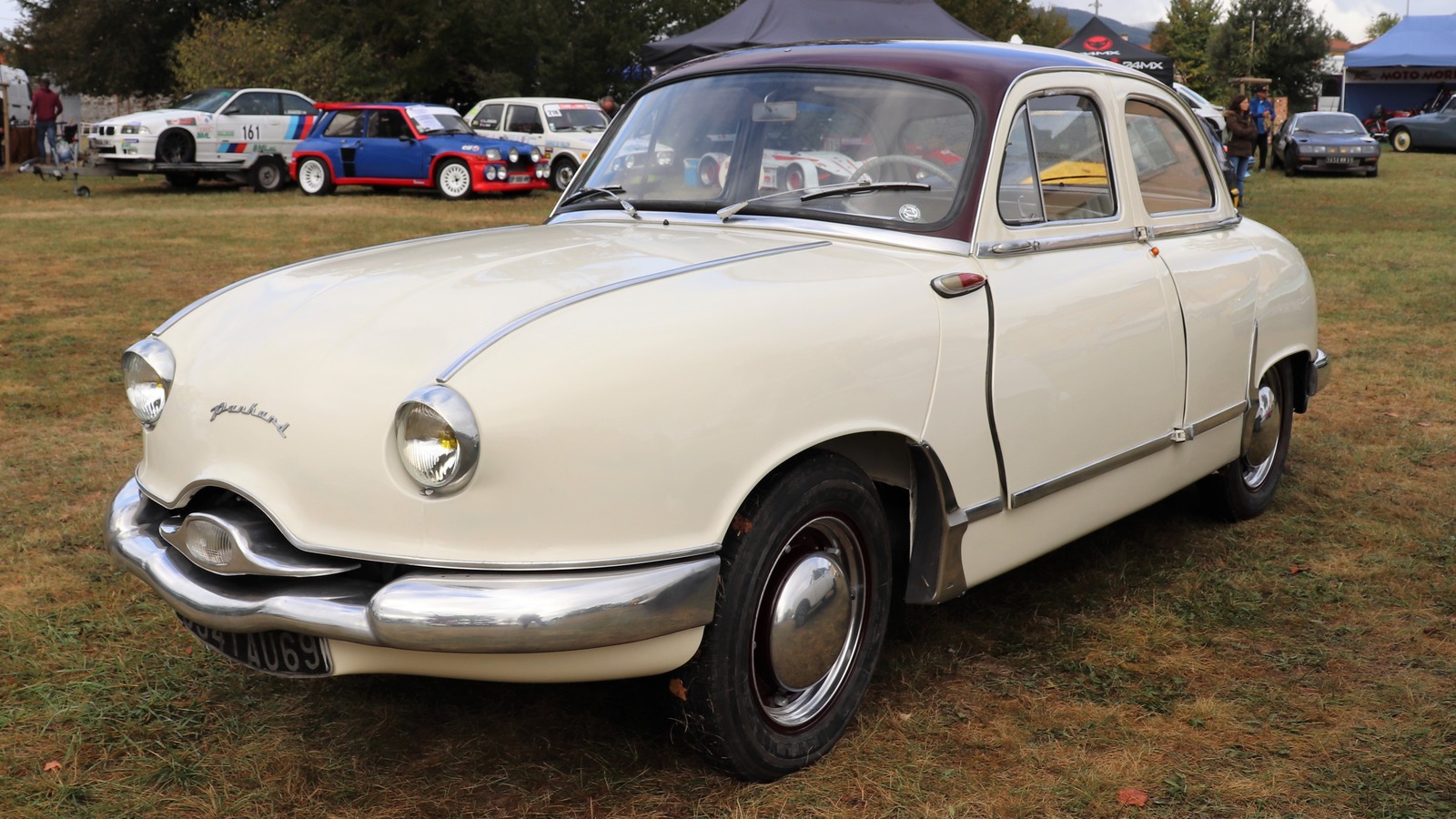The Panhard Dyna Z, produced from 1954 to 1959, was an advanced vehicle for its time. Although most Americans are unfamiliar with the former French brand, Panhard started out as Panhard & Levassor back in 1887, the dawn of the automotive age. The company started out licensing Daimler's rear-engined layout, but it would be the first to use what became known as the Systeme Panhard , which placed the engine in the front of the chassis and the transmission behind it, with the final drive going to the rear wheels.
This layout would become standardized across the auto industry, until the packaging advantages of front-wheel drive became dominant in the latter half of the 1900s — but Panhard also got there early with the Dyna Z. The Dyna Z was the successor to and a further evolution of the aluminum-alloy bodied, two-cylinder Dyna X, which had been made from 1946 through 1953 but looked like an old-fashioned car from the 1930s. The new Dyna Z was designed to achieve the highest levels of vehicle efficiency, providing plenty of interior space while using the bare minimum of fuel to propel it.

This was a primary requirement for cars made in post-war France, when raw materials and fuel were scarce. The Dyna X and Z vehicles had aluminum bodies simply because steel was rationed, but aluminum was not, so greater supplies of aluminum were available to French automakers. This changed in 1957 as the Dyna Z switched to a heavier steel body for cost reasons.
The precursor of the Panhard Dyna.
















